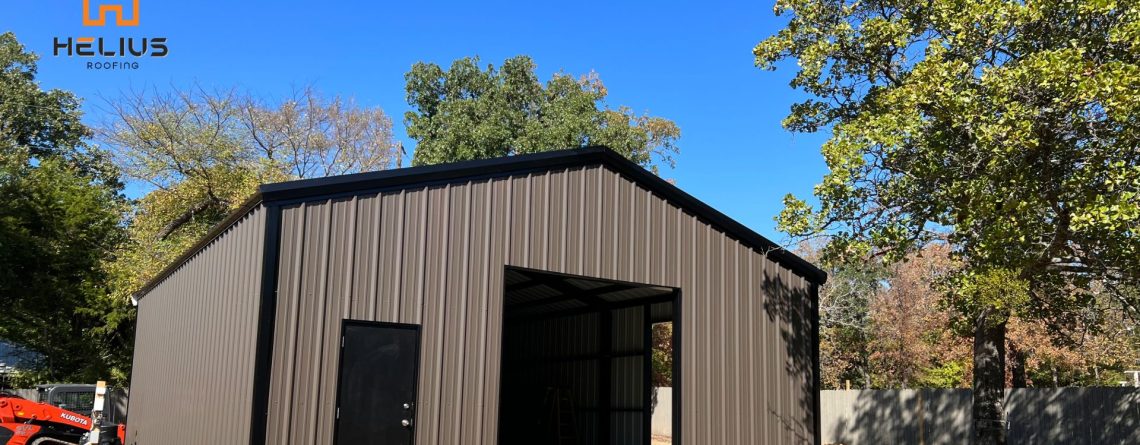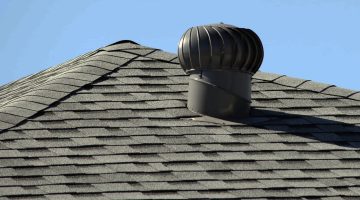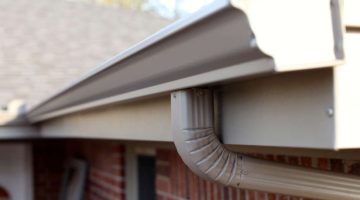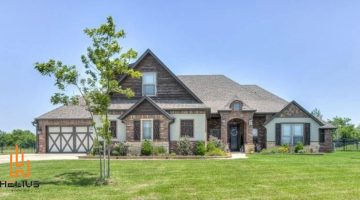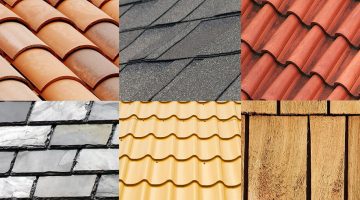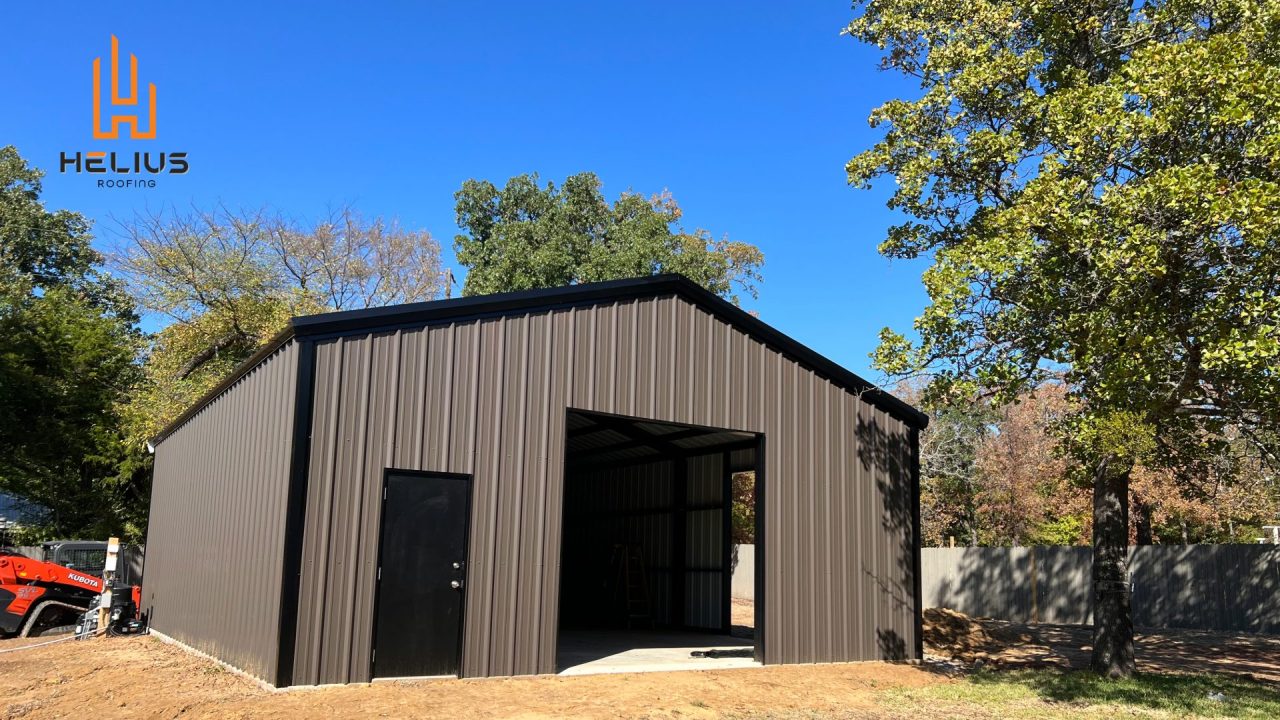
Metal buildings have become a popular choice for commercial, industrial, and even residential applications, thanks to their durability, affordability, and versatility. However, like any construction, metal buildings require proper care and maintenance to ensure they last for many years. At Helius Roofing and Construction, we have extensive experience with metal building systems and understand the best practices for maximizing their longevity. Here are key steps to ensure that your metal building serves you efficiently for decades to come.
1. Choose High-Quality Materials from the Start
The lifespan of your metal building begins with the quality of materials used during construction. Metal buildings are often made from steel, aluminum, or galvanized steel, each with its own characteristics of strength, rust resistance, and durability. At Helius Roofing and Construction, we emphasize using top-quality materials and components that are built to withstand various environmental conditions.
Ensure that your building materials include high-quality protective coatings such as galvanized or zinc-aluminum finishes, which provide a layer of defense against corrosion. Opt for corrosion-resistant metals, especially if your building will be located in areas prone to moisture or salt air. Taking this step during the construction phase sets the foundation for a long-lasting structure.
2. Proper Installation and Design
The design and installation of your metal building are critical factors in its longevity. Improper design or poor installation can lead to a range of issues, from structural weakness to water infiltration, which can cause corrosion over time. Partnering with a reputable construction company like Helius Roofing and Construction ensures that the building is properly designed and installed according to industry standards.
A few key design elements can enhance the longevity of your metal building:
- Adequate drainage: Ensure that your metal roof is designed with sufficient slope and proper drainage systems to prevent water from pooling, which can lead to rust and damage.
- Ventilation: Proper ventilation is essential to prevent the buildup of moisture inside the building, which can lead to condensation and accelerate rust and corrosion.
- Insulation: Installing high-quality insulation can help regulate the building’s temperature, reducing condensation and preventing mold growth, which can contribute to corrosion.
3. Regular Inspections and Preventative Maintenance
One of the most effective ways to prolong the life of your metal building is through regular inspections and maintenance. Over time, weather, wear and tear, and other environmental factors can affect the structural integrity of your building. Early detection of minor issues can prevent them from becoming costly repairs or replacements in the future.
A professional inspection schedule should include:
- Roof inspections: Check for loose fasteners, worn gaskets, and any signs of rust or corrosion. Water infiltration from a compromised roof can significantly shorten the life of your building.
- Sealant and joint inspections: Ensure that all sealants around windows, doors, and seams are in good condition. Cracked or missing sealants can allow moisture to enter the building, leading to rust and other damage.
- Foundation inspections: Check for any cracks or shifting in the foundation that could affect the building’s stability.
At Helius Roofing and Construction, we recommend conducting these inspections at least twice a year, ideally in the spring and fall, and after major storms or weather events. Our maintenance services can help you stay ahead of any potential problems.
4. Regular Cleaning
Regular cleaning is essential for maintaining the integrity of your metal building’s exterior. Dust, dirt, leaves, and other debris can accumulate on the surface of the metal panels, leading to trapped moisture, which can cause rust over time. In coastal areas, salt from the air can also accumulate on metal surfaces and accelerate corrosion.
Here are a few tips for keeping your metal building clean:
- Remove debris: Clear any leaves, branches, or other debris from your roof, gutters, and downspouts. Blocked gutters can cause water to back up and damage the roof or foundation.
- Wash the building: Use a low-pressure washer or a gentle soap and water solution to clean the exterior walls and roof at least once a year. This will help remove dirt, grime, and pollutants that can cause deterioration. Avoid using harsh chemicals that could strip the protective coating from the metal.
- Clean gutters and downspouts: Gutters play a crucial role in directing water away from the building. If they are clogged, water can pool around the foundation or leak into the building, leading to rust and structural damage.
5. Protective Coatings and Paints
Applying protective coatings and paints is another effective way to prolong the life of your metal building. Over time, the original protective coating on your building’s metal surfaces may wear down due to weather exposure, UV rays, and pollution. Regularly reapplying these coatings can provide an additional layer of protection against corrosion and rust.
- Metal primers and paints: Primers specifically designed for metal surfaces help create a strong bond between the surface and the paint. Look for high-quality, weather-resistant paints with UV protection to prevent fading, cracking, or chipping.
- Anti-corrosion coatings: Specialized anti-corrosion coatings can be applied to exposed areas that are prone to rust. This is especially important for buildings located in humid or coastal regions.
- Galvanizing or anodizing: Depending on the material of your building, you might consider galvanizing or anodizing, which adds an extra protective layer to the metal surface.
6. Rust Prevention and Treatment
Rust is one of the biggest threats to the lifespan of a metal building. While high-quality metals and protective coatings are designed to resist rust, it can still develop over time, especially in harsh environments. Preventing rust and treating it promptly when it occurs are essential steps in maintaining your building.
- Apply rust inhibitors: For areas that are particularly prone to rust, such as fasteners, edges, and joints, consider applying rust-inhibiting products. These can extend the life of your metal building by preventing rust from forming in vulnerable areas.
- Treat rust early: If you notice rust starting to form on your building’s exterior, address it immediately. Remove the rust using a wire brush or sanding tool, then apply a rust-inhibiting primer and repaint the area. Leaving rust untreated can lead to rapid deterioration.
7. Control Moisture and Condensation
Moisture is a significant contributor to rust and corrosion in metal buildings. Controlling the humidity levels inside your building and preventing condensation from forming on the metal surfaces can help extend its lifespan.
- Proper insulation: Installing high-quality insulation can help reduce temperature fluctuations inside the building and prevent condensation from forming.
- Use vapor barriers: Vapor barriers are an effective way to prevent moisture from penetrating the walls and roof of your metal building. They create a barrier that stops condensation from accumulating on the interior surfaces.
- Dehumidifiers: In particularly humid environments, using a dehumidifier can help regulate the humidity levels inside the building and reduce the chances of moisture buildup.
8. Work with Professional Contractors
Finally, one of the best ways to ensure your metal building lasts as long as possible is by working with a trusted, experienced contractor like Helius Roofing and Construction. We specialize in the construction and maintenance of metal buildings and can provide expert advice on how to protect your investment.
Conclusion
Prolonging the life of your metal building involves a combination of selecting high-quality materials, proper installation, routine maintenance, and rust prevention. By following these practices and working with experts like Helius Roofing and Construction, you can ensure that your metal building remains in excellent condition for decades to come, providing you with a durable, cost-effective, and low-maintenance solution for your construction needs.

